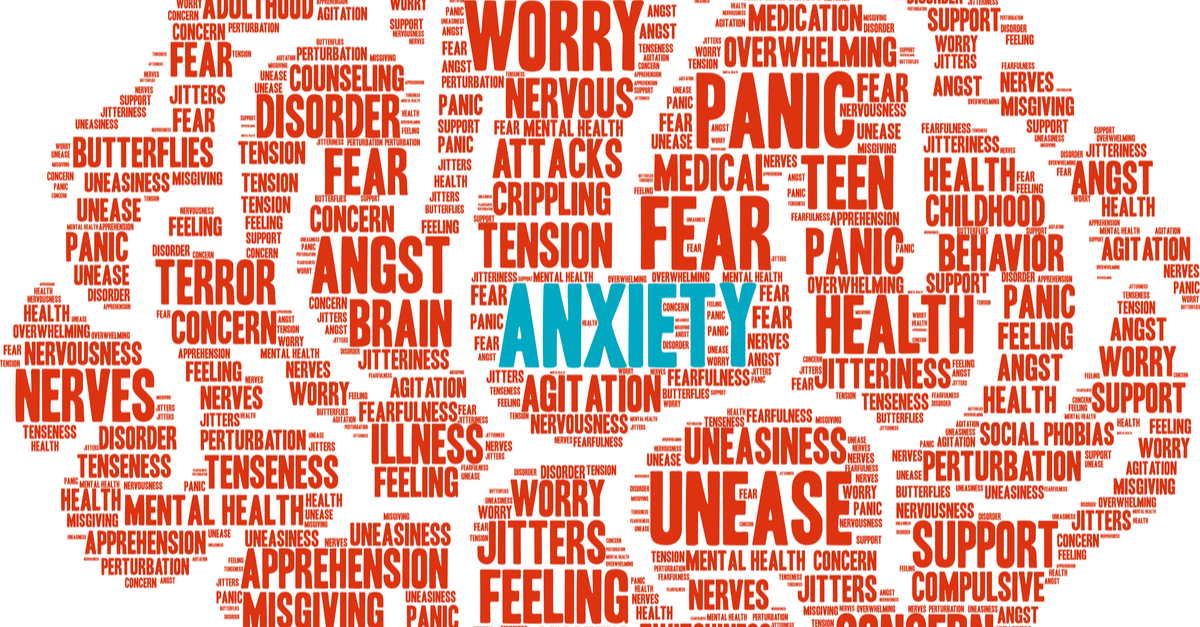More Brain Talk—Anxiety and Fear

In the center of the brain are a set of large structures that surround the deep limbic system. These are the Basal Ganglia system. The function of this system is to help integrate feelings, thoughts, and movement. This system also helps us smooth our motor behaviors as we shift from one activity to another. And it helps to set our “idle speed”, to modulate motivation, and is involved with our feelings of pleasure.
The basal ganglia system helps us transition and move smoothly as we take in our feelings and thoughts. If we are overloaded with emotions, this system can lock up. That is why when you see an accident or something bad happen, you may find yourself “freezing” versus taking the action that is needed. If your basal ganglia system is over-active, you will possibly respond to stressful situations with a tendency to freeze or become paralyzed, unable to do anything. Often over-active basal ganglia systems are seen in people with higher anxiety. This may show up as anxiety disorder, obsessive compulsive disorder, movement disorders, Tourette’s/tics or Post Traumatic Stress Disorder. In these cases, the “idle speed” is too high. If the basal ganglia are under-active, you see people with Attention Deficit Disorder. These people will spring into action when they are in a stressful situation because their basal ganglia didn’t lock up, they just become more active.
When the basal ganglia work too hard or are too active, the person will experience increased activity, anxiety and/or panic, will be conflict avoidant, will predict the worst, and have an excess of motivation. Now excessive motivation may sound good, but these people can’t stop themselves from overworking. They don’t know how to relax because they are too revved up. If people have under-active basal ganglia, they will have symptoms of Attention Deficit Disorder and decreased motivation.
People with over-active basal ganglia will tend to avoid conflict because they are avoiding anxiety. Anxiety can be very uncomfortable, so avoiding situations that make them feel more uncomfortable becomes a way of coping. And again, they can become frozen when confronted with conflict so may find a way to avoid.
People with over-active basal ganglia on the left side of the brain tend to be chronically irritable or angry. Mood stabilizers can be helpful in decreasing the irritability and calming down these over-active areas in the brain. This can be helpful when people are dealing with Post Traumatic Stress Disorder. Sometimes events occur that put our brain on high alert and because of the circumstances, the brain never lets down, never resets, and never relaxes and becomes calm.
Treatment for the over-active basal ganglia includes a variety of options and a holistic approach. Supplements include Valerian root and kava kava. A balanced diet is encouraged along with daily supplements of fish oil. The B vitamins, especially vitamin B6 along with B complex, are helpful. Biofeedback, neurobiofeedback, meditation, assertiveness training, and relaxation techniques are also treatments to consider. All of these modalities will contribute in working to decrease the over-aroused part of the brain. Cognitive behavioral therapy can be used to change the thoughts of “predicting the worst”. This might be one of the most critical treatments to incorporate in healing this area of the brain. People with over-active ganglia tend to see the worst and expect the worst. Changing this behavior through working on your thoughts (cognitive-behavioral therapy) can help to change your brain. This would be your treatment goal in therapy. It is also good to limit caffeine which is a stimulant and will increase the activity of the basal ganglia. Alcohol should also be limited because as anxiety responds in the short-term to alcohol, it also becomes difficult to take yourself off alcohol when you have anxiety. This increases the chances of becoming alcohol addicted.
Medications that may be useful include anti-anxiety medications in low doses for short periods of time, Buspar, antidepressant medications, anticonvulsant medications and blood pressure medications.
Nutritionally we can affect our brain. If you have a heightened, over-active basal ganglia and anxiety, you should consider a balanced diet and not allow yourself to get too hungry – perhaps have smaller meals throughout the day. Hypoglycemic episodes make your anxiety worse so you really want to keep your blood sugar levels even. A low basal ganglia activity with low motivation will do better with a high-protein, low-carbohydrate diet, giving you more energy throughout the day.
Hopefully this information about the brain and how it operates will motivate you to take the time to ensure it is healthy and operating optimally. If you aren’t feeling well, chances are your brain isn’t in its most favorable state. Paying attention and learning what you can do to make your brain operate at its best can make you feel your best.
Tags: brain and anxiety and fear, Brain health and wellness, neurofeedback
ABOUT THE AUTHOR

Janie Pfeifer Watson
Licensed Independent Clinical Social Worker
Licensed Independent Mental Health Practitioner- Janie Pfeifer Watson, LICSW, is the founder and director of Wholeness Healing Center, a mental health practice in Grand Island, Nebraska with remote sites in Broken Bow and Kearney. Her expertise encompasses a broad range of areas, including depression, anxiety, attachment and bonding, coaching, couples work, mindfulness, trauma, and grief. She views therapy as an opportunity to learn more about yourself as you step more into being your authentic self. From her perspective this is part of the spiritual journey; on this journey, she serves as a mirror for her clients as they get to know themselves—and, ultimately, to love themselves.
LATEST ARTICLES BY Janie Pfeifer Watson
- Glimmers of Light – Nurturing Joy During the Holidays
- Live Stronger: Strength, Balance, and Social Connection after 50 Stay strong. Stay Connected. Stay independent.
- Healing is a Lifelong Journey, and It Doesn’t Happen in a Straight Line
- Habits to Develop to Age Well
- Discover the Power of EMDR Therapy at WHC
Subscribe today
Sign up to receive the latest mental health tips and inspiration